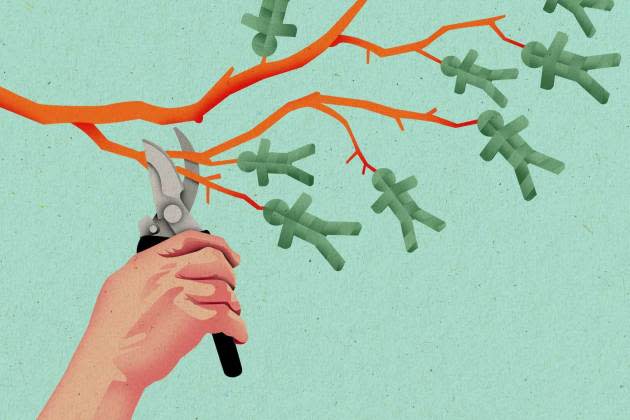Process of Elimination: Why Layoffs Are Hitting Media, Tech and Gaming – Despite Their Steep Costs
- Oops!Something went wrong.Please try again later.

When Paramount Global announced it was pink-slipping 800 employees, roughly 3% of its workforce, on Feb. 13, CEO Bob Bakish praised those sent packing for a job well done. “Your talents have helped us advance our mission of unleashing the power of content around the world,” he wrote in a companywide memo. “We are a better company because of you.”
It’s the kind of morale-draining note that’s been going around a lot lately. Since the start of the year, media, tech and video gaming industries have been hit hard by layoffs. Microsoft cut 1,900 employees across Xbox and Activision Blizzard. Amazon eliminated “several hundred” roles at Prime Video and its studio, Twitch, as well as audio platform Audible. Google’s parent company, Alphabet, also trimmed payrolls by several hundred. And the Los Angeles Times said goodbye to 20% of its newsroom.
More from Variety
Why are so many companies making layoffs now? A kind of copycat effect can happen across industries when job cuts start occurring, experts say.
“It’s pressure from investors,” says the Wharton School professor of management Peter Cappelli. For example, if investors decide a big tech company has overhired and pressure it to make layoffs, those adjacent to it feel compelled to do the same, he says. “And then it creates this norm that this is what you’re supposed to do now.”
Companies that cut costs by eliminating jobs can boost their stock price temporarily. But, Cappelli says, there’s little evidence that mass layoffs conducted to achieve synergies “really work.”
Harvard Business School professor Sandra Sucher, who has spent decades studying the “hidden costs” of layoffs, says companies don’t account for their potential losses when making head-count reductions. “Companies that do these things tend to have a profit underperformance compared to companies that aren’t doing layoffs, and that can last as long as three years,” Sucher says. That’s because the total costs of job cuts include severance, benefits and helping former workers find employment. There are also less tangible drawbacks. Layoffs result in “disengaged and frightened” employees, Sucher says. “When you think about this in human terms, they’re saying to people, ‘You’re OK and good as you are, until I decide you’re not.’”
Still, layoffs in industries geared around intellectual property are one of the main ways managers can align their costs with revenue. For gaming in particular, more cuts are likely coming through mid-2024, says IDG Consulting president and CEO Yoshio Osaki, who estimates the industry is about halfway through its latest rounds of layoffs.
But a brighter side is in sight. Major game studios are shifting their focus from growth to profitability — similar to media companies’ strategy with their streaming businesses — and are doubling down on tentpole franchises, Osaki says. Post-layoffs, “they are still going to be spending more money and bigger budgets on a lot of their established franchises, but they are divesting out of a lot of the newer games and IPs.”
More M&A is also likely on the horizon for gaming and transmedia properties, he predicts, in the wake of Microsoft’s $69 billion megadeal for Activision Blizzard. The goal for industry players is to gain enough scale to make it to the “upper echelon” of media companies, thus to get “disproportionately high” return on investment.
“So even as you see more layoffs,” Osaki says, “what we’re also seeing is a widening gap between the haves and the have-nots.”
VIP+ Analysis: Gaming Layoffs Cut Costs at Expense of Fresh IP
Best of Variety
Sign up for Variety’s Newsletter. For the latest news, follow us on Facebook, Twitter, and Instagram.
